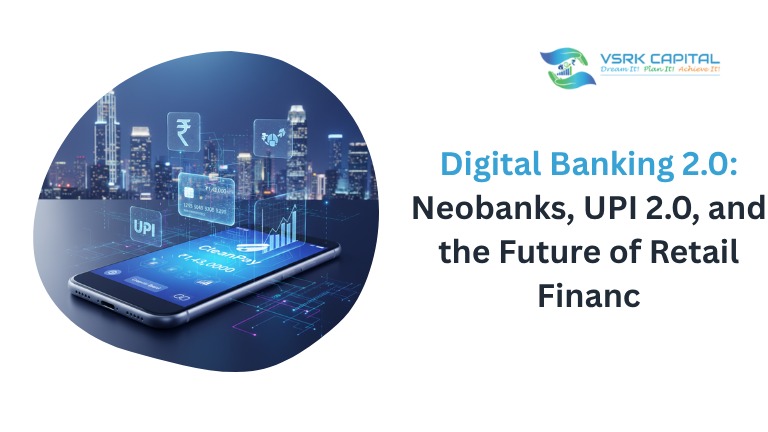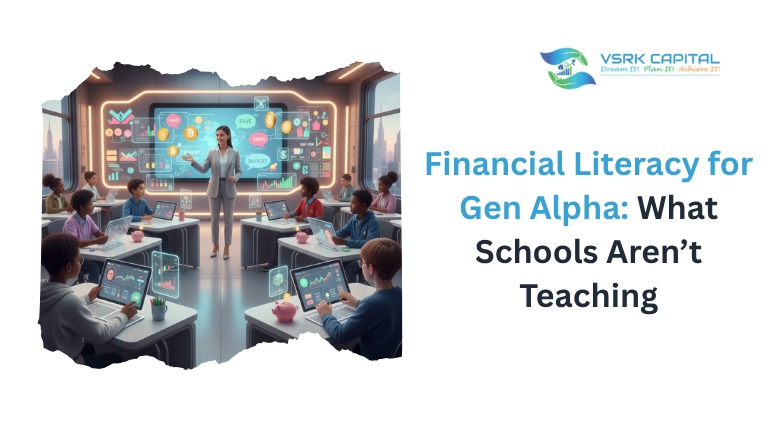When it comes to taxes, making the right choice can save you lakhs of rupees every year. At VSRK Capital, we often meet successful business owners, doctors, lawyers, and other high-earning professionals who ask us the same question: “Should I stick with the old tax regime or switch to the new one?” This isn’t a simple yes or no answer. Let’s break it down in plain language so you can make a smart decision for yourself.
Understanding Both (Old & New) Tax Systems
The government introduced the new tax regime in 2020 to make things simpler. It offers lower tax rates but takes away most of the deductions and exemptions you could claim earlier. The old regime has higher tax rates but allows you to reduce your taxable income through various investments and expenses.
Think of it this way: the new regime is like a fixed menu at a restaurant – straightforward but limited choices. The old regime is like ordering à la carte – more complex, but you can customise based on your needs.
What Are High Net-Worth Individuals Choosing?
Here at VSRK Capital, we’ve noticed an interesting pattern. Most high-net-worth individuals are sticking with the old tax regime, and there are solid reasons behind this choice.
High earners typically have multiple income sources – salary, business income, rental properties, and investments. They also make substantial investments in real estate, insurance, and retirement funds. Under the old regime, they can claim deductions for home loan interest, health insurance premiums, donations, and investments in instruments like ELSS, PPF, and NPS.
Let’s look at a real example. Suppose you earn ₹50 lakhs annually and invest ₹5 lakhs in eligible deductions. Under the old regime, your taxable income drops to ₹45 lakhs. Even with higher tax rates, the total tax you pay is often much less than what you’d pay under the new regime. VSRK has helped numerous clients run these calculations, and in most cases, wealthy individuals save more money by staying with the old system.
When Does the New Regime Make Sense?
The new tax regime works better for people who don’t have many investments or deductions. If you’re young, just starting your career, or someone who doesn’t invest in tax-saving instruments, the new regime could benefit you with its lower rates and simplicity.
However, at VSRK Capital, we rarely see high-net-worth individuals fitting this profile. Wealthy people usually have financial advisors, chartered accountants, and wealth managers who help them maximise their tax benefits through proper planning.
The Strategic Standpoint
Your tax regime choice should depend on your personal financial situation. Don’t just follow what others are doing. Calculate both options, or better yet, consult experts like us at VSRK who can run detailed comparisons based on your actual income and investments.
Remember, tax planning isn’t just about choosing a regime – it’s about making smart investment decisions throughout the year that align with your long-term financial goals.
Conclusion
Choosing between the new and old tax regime isn’t about which one sounds better – it’s about which one saves you more money based on YOUR specific situation. High-net-worth individuals typically benefit from the old regime because of their investment patterns and ability to claim multiple deductions.
At VSRK Capital, we believe that effective tax planning is a vital component of wealth management. Before making your choice, sit down with your financial advisor, run the numbers, and see which regime truly benefits you. Don’t leave money on the table simply because you didn’t take the time to calculate properly.
Make an informed decision, and remember – VSRK is always here to help you navigate these important financial choices with clarity and confidence.
FAQs
Yes, salaried individuals can switch between both regimes annually. However, those with business income can only switch once.
Based on VSRK Capital's experience, most high-net-worth individuals choose the old tax regime because they benefit significantly from various deductions and exemptions.
Not necessarily. Lower rates don't always mean lower taxes. If you have substantial deductions, the old regime often results in paying less tax overall.
Absolutely! Every person's financial situation is unique. The experts at VSRK recommend getting personalised advice rather than making assumptions.
You'll end up paying more tax than necessary. That's why proper calculation and planning with professionals like VSRK Capital is important.













